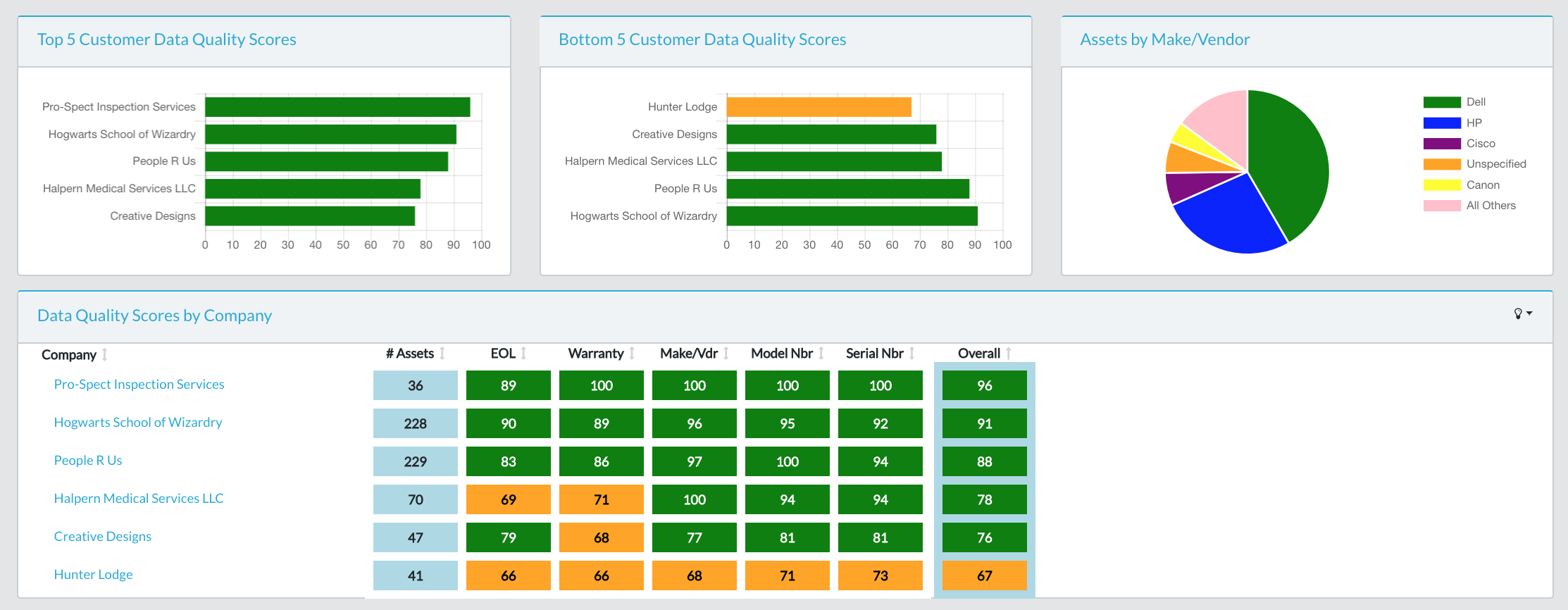
As an MSP, your reputation is only as good as your data. And after working with 100 vCIOs as they progress on their Strategic Business Review journey, we know that on average, the data doesn’t look good. If your data is suspect, your clients might question the quality of your services.
Let’s start by considering the data we have. As an MSP, we should already have access to our clients’ assets (hardware and software) warranty and purchase dates, supported and Microsoft 365 users, vendor contract and subscription renewals, and operating systems. With this data we provide insights on:
-
- Budget forecasts
- Active and available licenses
- Contract renewal windows
- Necessary asset and OS lifecycle replacements
- Technology Debt
Data Quality (or lack thereof)
Now let’s consider data quality – or more to the point – let’s consider the impact of POOR data quality:
No purchase dates for a device (or no make, model, serial number so we can look up those dates)
- Without a purchase data, you cannot automate the calculated end of life date lookup. Without an end of life date, the asset is missing in the budget forecast. If the asset is missing in the budget forecast, then it isn’t a forecast, it is a guess – which we already know is wrong. You’ll be scrambling to explain to your customers why they have to replace hardware at the last minute that you should have known about in advance.
Inaccurate user lists
- It is the MSPs responsibility to help its clients run efficiently. Overspending on users’ software licenses because of unaccounted for inactive users is not efficient. Overcharging for users is bad for clients. as is leaving outdated accounts active on cloud services. Undercharging is bad for the MSP. Either way, you’ll spend your QBR focusing on aligning your data with your client’s actual needs instead of engaging in higher value strategic discussions.
Quick fix data
- In an effort to get a client report out the door, you manually update a spreadsheet and print. But the problem comes when that data isn’t updated at the source and you have to perform the same time consuming fixes during the next review cycle. Lather. Rinse. Repeat. It’s even worse when that person repeating manual tasks is the most expensive employee at your MSP – the owner! Here’s the math on how much it is costing you: QBR prep cost video
Bad data = Bad business
It is pretty obvious, bad data is bad business. The solution is clearly to do it right, and do it right the first time. But how do you know the quality of your data – especially when your PSA tools lack any real data quality controls? That is exactly the question Lifecycle Insights wants to help you answer with their data quality report.
Introducing the data quality score
Lifecycle Insights examines your PSA data and delivers a data quality score based on a weighted average of missing data. This color-coded score gives you instant feedback on the quality of your clients data. Your data quality score is a baseline. It is not the finish line. It also comes with some other critical information. Each client has a data quality score with drillable reports to pinpoint individual asset details and/or missing data. Prioritize your clients (read more on how to segment your client base here), choosing the ones with upcoming QBRs first and get to work. Thankfully now that you know what is missing, a tier 1 tech or qualified intern could go collect that data and enter it in the source of record. With each sync, data quality scores improve and so does your business.
Better data. Better insights. Better business.


